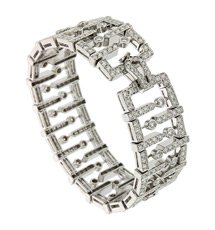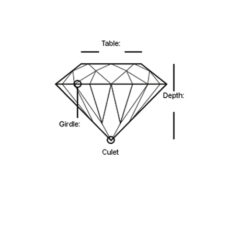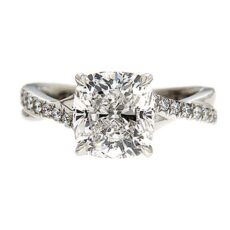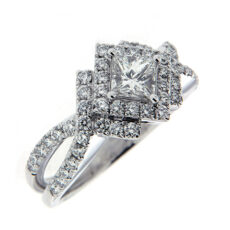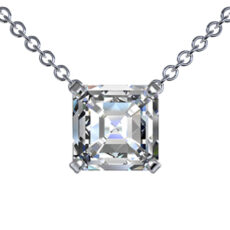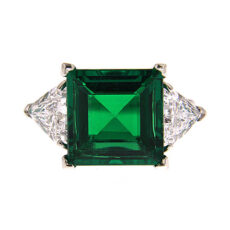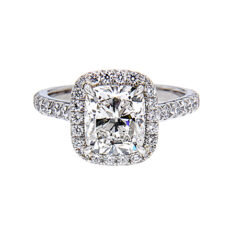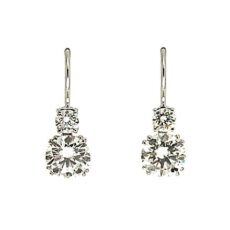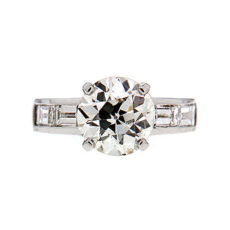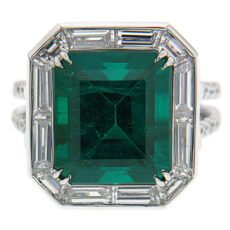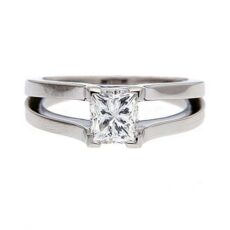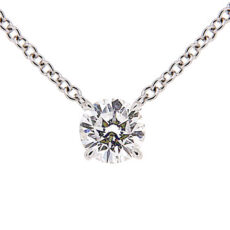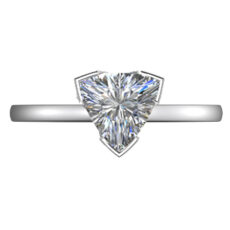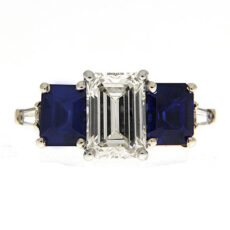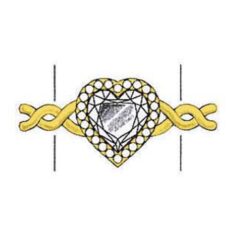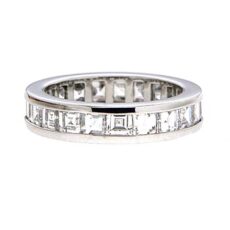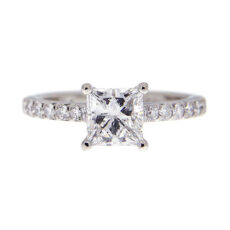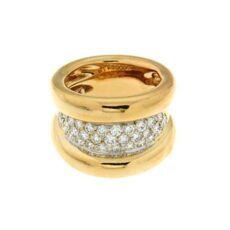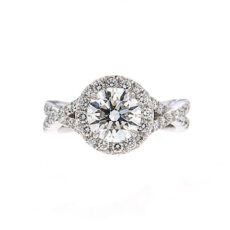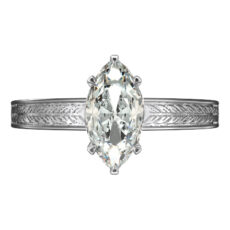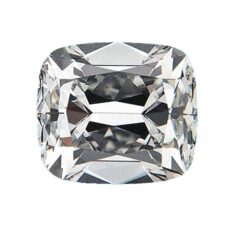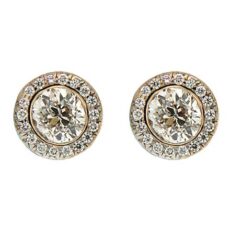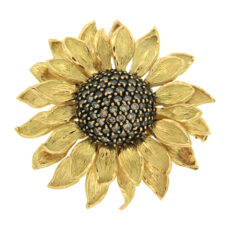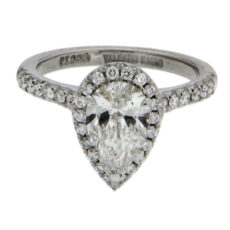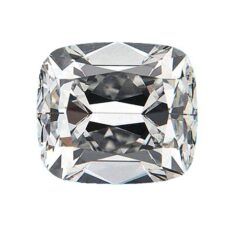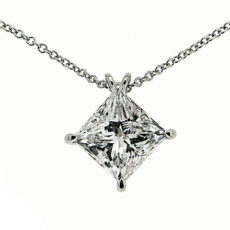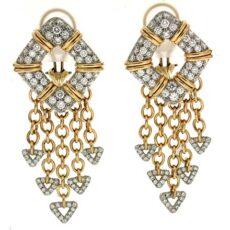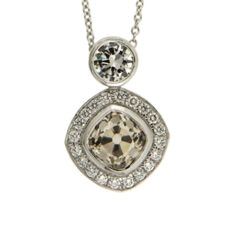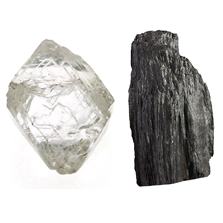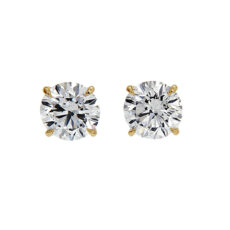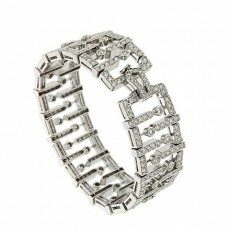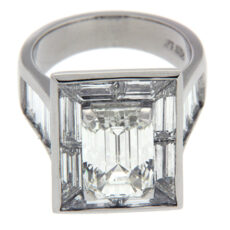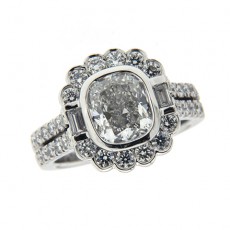A diamond is a mineral consisting of over 99.95% crystalized carbon, its atomic structure making it the hardest natural substance known to man. They form between 75 and 120 miles below the earth’s surface, where the temperature and pressure are powerful enough to form this unique gem. Volcanic eruptions from over 50 million years ago sent these stones to the earth’s crust.
Diamonds

Many factors that go into creating diamonds so they are suitable for diamond rings and other jewelry. Not only must the diamonds be mined and checked for provenance, the stones are also examined to see if they are suitable for jewelry or other purposes. Jewelry grade diamonds are then faceted to bring out the brilliance and luster they’re celebrated for. With all the work and the many hands that a diamond must go through, some people enjoy the peace of mind that comes with certification, attesting to the quality of the stone.
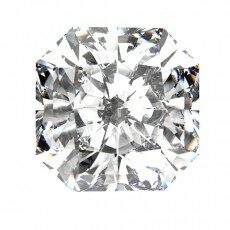
Many diamond lovers know about diamond cuts, and how a beautifully cut diamond lights up the interior of a stone. It’s not uncommon for a person to have a favorite cut, be it a heart, an emerald or an oval. However, it’s also important to remember that there is a difference between the cut of a diamond and its shape. The former refers to faceting and how it makes the brilliance and clarity of a stone come to life. The other refers to the outline of a jewel.
The most common cut is the round brilliant, which provides most of the round diamonds on the market. Everything else, from heart to cushion, is known as a fancy shape. Valentin Magro offers diamonds in square, rectangular, triangular, heart, oval, marquise and pear shapes. To learn more about diamond shapes and find which ones appeal to you, please continue reading.

In addition to jewelry, Valentin Magro offers loose diamonds for sale. They come in a variety of cuts shapes and sizes, from the classic round brilliant to modern cuts such as the princess. All of our diamonds are certified by the Gemological institute of America. Many of these loose diamonds are featured on our website for your perusal. Purchasing loose diamonds allows for flexibility. If one has trouble finding the diamond jewelry they desire, they can start with loose stones. Sometimes finding the right jewelry begins with finding an attractive gem. The jewelry can then be planned around the jewel.
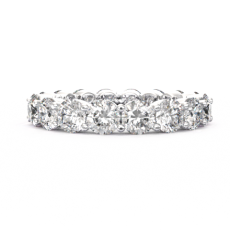
After a diamond is processed into its final form, it is analyzed via a system where it is graded by Cut, Clarity, Color and Carat. Together, they are known as the 4 Cs, a system created by the Gemological Institute of America (GIA) to give jewelers an objective and uniform method of evaluating diamonds. Each of the 4 Cs is connected with a list of grades to determine what is optimal, poor or in between. The GIA states that items of great value often come with documentation verifying their worth, and jewels should be no different. A report describing what your diamond is like would help add to its significance and ability to be identified. Continue reading for a more detailed explanation on the 4 Cs of a diamond.
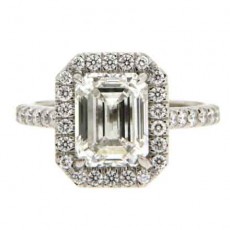
Conflict Diamonds are stones which are mined under duress, by men, women and children who are forced into service by rebels. Once these diamonds are produced, they are sold to raise funds for weapons and activities that oppose internationally recognized governments. The miners of these gems receive no benefits, but must endure horrible experiences.

The Gemological Institute of America aims to be as precise as possible when it comes to certified diamonds. Jewels are placed in uniform packaging before arriving at the laboratory to reduce factors that may skew the grading process. The Gemological Institute of America developed the concept of the four Cs of carat, clarity, color and cut to create an objective standard for certified diamonds.

Diamonds are prized for their ability to reflect light. This is most celebrated in brilliant cut diamonds, which combine brilliance, fire and luster to showcase the jewels bright qualities. While step cut diamonds aren’t as bright, they still showcase the beauty of the diamond crystal. Step cut diamonds are square or rectangular diamonds with a faceting style distinct from brilliant cuts. Their tables and culets, or upper and bottom most facets, are broad while other facets on the jewel are downplayed. Facets sit parallel to one another, emphasizing a geometric look. The interior of the diamond is highlighted, with less brilliance to distract from the view.
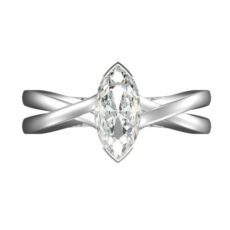
Marquise diamonds have an oval shape with pointed, rather than blunt ends. They’re said to originate in the mid-18th century, when a French king asked for a diamond in the shape of his lover’s mouth. Marquises are still worn today for diamond engagement rings and wedding bands. Much of their appeal comes from their uncommon shape and flirty origins.
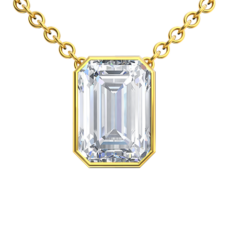
Emerald cut diamonds came to us in the 1500s when lapidaries accidentally stumbled upon this cut when shaping emeralds into rectangular cuts. The stepped facet, which is originally a reminder of the Aztec temple architecture was so loved by the people, that stonecutters started shaping other stones in emerald cut, diamonds being one.

During diamond grading, many aspects of the stone are examined. The size of the table in relation to the girdle perimeter is considered as are the angles of the upper and lower halves of the jewel. How the diamond takes in and reflects light is also taken into account. While it’s listed as a grade separate from cut, symmetry too carefully considered.

Scintillation is a type of light that appears in diamonds. Unlike brilliance, which is the white light which illuminates a diamond, and fire which is the jewel’s prismatic light, scintillation is the contrast of light and shadows within the diamond. When mounted in jewelry, scintillation makes the gemstone sparkle as the wearer moves.

The diamonds used at Valentin Magro are certified by the Gemological Institute of America. Each of these gemstones come with a report detailing the qualities of its jewel. GIA certified diamonds also come with unique identification numbers, making verification easier as well as distinguishing individual diamonds from one another. To ensure our clients receive reliable information regarding their certified diamonds, we use an independent third party laboratory. This step ensures that there’s as little bias as possible with the diamond grading. We want the best for your clients, which includes honesty.
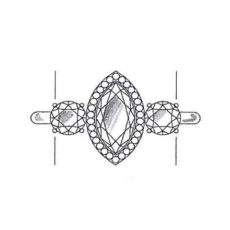
Side stones are jewels, commonly diamonds, which are used to flank the sides of a central gemstone, which is often the largest gem in the design. They’re most common on rings, though side stones may be found on pendants, brooches and other pieces of jewelry. Depending on the design, they may be the only embellishment on the ring, or may be accompanied by halos, pave sets and other decorative techniques.
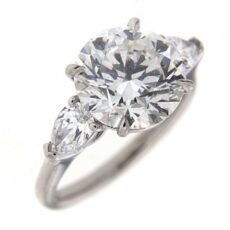
Side stones are jewels which flank a larger, central gem. For colored gemstone or diamond rings, side stones are usually diamond. They add sparkle as well as greater design possibilities. The number of side stones on a band varies. They can range from a pair, to rows of little jewels traveling down the ring’s shoulders.

For diamonds to form in nature, they need the assistance of other rocks and minerals. Some provide the carbon needed to create the jewels, and others serve as a means of transport to bring diamonds to the earth’s surface. Still more stones serve as heralds, alerting explorers to the possibility of diamonds.
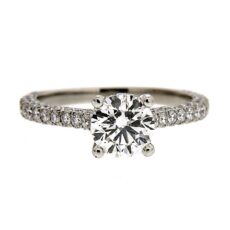
A single small diamond may not gather as much attention as its bigger counterparts. Several placed together, however, creates a plane of glitter. Melee diamonds are known for the miniscule size and design possibilities for jewelry. Whether it’s unique engagement rings or classic styles, they help diamond bands shine.
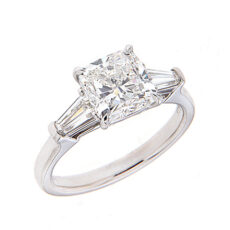
Step cut diamonds stand out from their brilliant counterparts by their shine. The latter illuminates the stone with a mix of white light, shadows and bits of rainbow. Step cut diamonds focus on light reflecting off the jewel’s surface and present a view of the stone’s interior. As with brilliants, many step cuts are used for side stones on diamond rings.

Diamonds are the gem of choice for engagement rings, wedding bands and other jewelry. Before they appear on your hand, diamonds spend countless years taking shape. They pass through many steps until they’re ready for you. Knowing the effort that goes into diamond rings makes them all the more precious.

Diamonds are admired for their brilliance, durability and romantic symbolism. They appear on every imaginable type of jewelry, from bracelets to tiaras. Diamond rings in particular are exchanged between couples as a sign of enduring love. The association with diamond rings and romance is so strong people may feel pressure to find the best possible jewel. While there is no one diamond that’s suitable for all, there are ways to find the ideal stone for you and your loved one.

As with many gemstones, diamonds are formed as a result of geological activity. The conditions that leads to the creation of diamonds are very specific, requiring the right environment and materials. They take shape between ninety and one hundred and forty miles beneath the earth’s surface, in the upper mantle. The earth underneath thick, geologically stable landmasses known as cratons provide the intense pressure needed to help diamonds take shape.
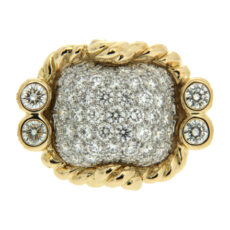
The Mohs Scale of Mineral Hardness determines a stone’s resistance to scratching. A mineral such as talc may be scratched by anything matching or exceeding its hardness. The higher on the scale a stone is, the less vulnerable it is to abrasions. Diamonds are at the far end, the pinnacle of hardness. At the same time, diamonds are admired for how its cuts draw out its aesthetic properties. Specialized tools are a must for bringing out the best in diamonds.
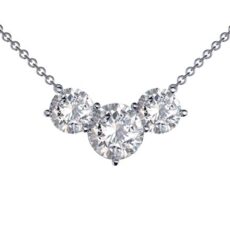
Diamonds are both beautiful and practical. The highest quality stones are usually set aside to be cut and set in jewelry. Less perfect gems and those made in laboratories are frequently used for industrial purposes. Diamonds’ hardness makes them ideal as abrasives, drill tips and cutting instruments.

For a diamond to come to your hands, it must go through many steps. They’re formed 90-120 miles below the earth. Volcanic activity brings the jewels to the earth’s surface. Traditionally diamonds were mined in India, Brazil and later South Africa. Today’s loose diamonds are produced on five continents.
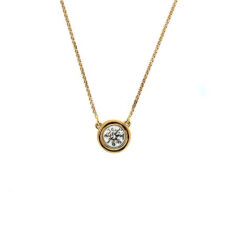
For early diamond cutters, the stone’s supreme hardness made diamonds tricky to shape. The invention of the scaif in 1496 used a wheel not unlike potter’s wheel, covered the surface with a mixture of oil and diamond debris, and clamps to hold diamonds against the wheel. This allowed multiple diamonds to be polished at once, as well as allowing cutters to fashion jewels with greater precision than before.
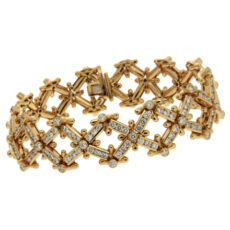
Though diamonds have been coveted since the time of the Roman Empire, they weren’t always beloved for their brilliance. The immense hardness of diamonds, in addition to giving them powerful durability, also means that cutting and polishing is difficult without specialized tools and technology. Without careful faceting to highlight the stone’s optical properties, early diamonds had dark interiors and only shone on their surface.
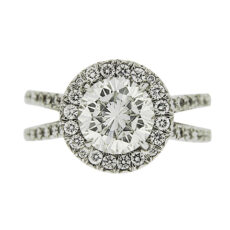
Light helps to draw out the aesthetics of a diamond. A well-made cut showcases the beauty of the jewel by encouraging light to illuminate the diamond, split into many hues, and sparkle for the pleasure of the viewer. Not all forms of lighting are equal. Different types have varying concentrations that underscore specific diamond traits.

The round brilliant diamond is one of the most popular of all diamond cuts. It’s a cut of choice for engagement rings, wedding bands, pendants and any other jewelry one can imagine. There is no single way to create a round brilliant, though jewelers are constantly experimenting with proportions, ratios and facets to create the brightest possible diamond, or an ideal cut.

Diamonds are admired for their beauty and the way they interact with light. While discoveries of new deposits and advances in mining have increased availability of the jewel, there are times people may wear jewelry with pretend diamonds, also known as simulants. Diamond simulants are created when people desire sparkling but inexpensive jewelry, for security purposes, or to replicate a well-known jewel. No matter how closely a simulant resembles a diamond, there are still ways to distinguish real from imitation.

Buying a diamond can be a tricky process. One must weigh the jewel of their dreams with the realities of availability and budget. A person may compromise with a moderately tinted stone or one with an inclusion or two more than planned. Sometimes a consumer will encounter a boon in the form of a high quality diamond for a reasonable price. This may seem too good to be true.
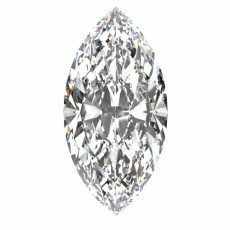
There’s much to love about a diamond’s brilliance and fire, just as there is plenty to adore about their color and clarity. Sometimes a person finds the diamond of their dreams but are unable to find the perfect mount. On other occasions, someone may want a new gemstone to freshen up a piece of jewelry with deep meaning, like designer engagement rings.


